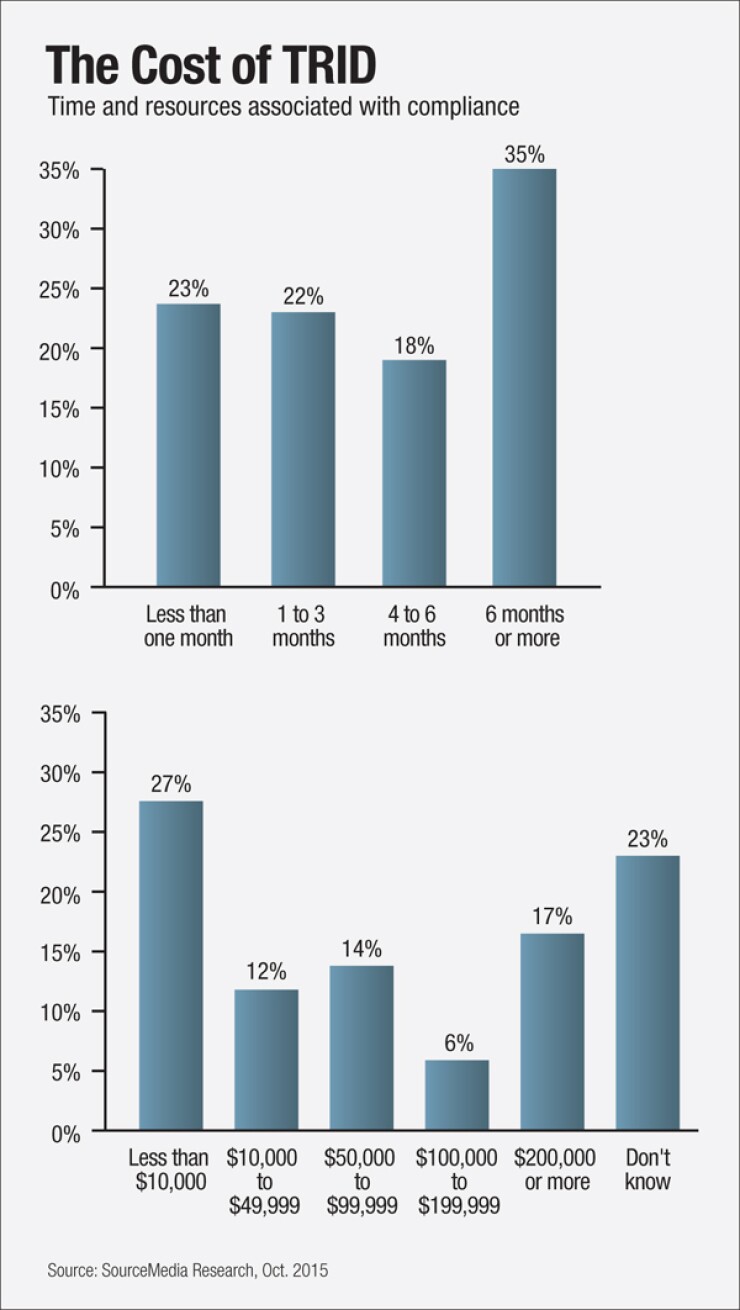

After years of plowing resources into compliance projects,
NMN, in partnership with SourceMedia Research, deployed a survey in September 2015 to a sample drawn from across the mortgage industry. The pool of more than 300 respondents includes C-suite and other senior-level professionals at mortgage origination and servicing firms of all sizes.
Mortgage originators entered 2015 with a major compliance hurdle looming — the Oct. 3 effective date to comply with the Consumer Financial Protection Bureau's TILA-RESPA Integrated Disclosures rules. For many lenders, the work involved in meeting the requirements for accurate and timely delivery of new borrower forms amounted to a
When asked to gauge the difficulty of various TRID requirements, 44% of lenders assigned one of the top two ratings to the document changes of the new Closing Disclosure form. In addition, 39% of lenders gave that same rating to document changes of the new Loan Estimate form. Meanwhile, 19.2% of lenders assigned one of the two lowest rates to the difficulty of title agent vendor management.
Questions about the financial and time resources dedicated to preparing for TRID showed that for many, the effort was a considerable one. More than half said their firms spent four or more months preparing. Among those who provided a cost estimate of their firms' TRID preparations, the respondent pool was split nearly evenly between firms that incurred less than or more than $50,000 in total direct costs related to TRID.
However, this figure is less reliable than the estimate of time spent; nearly a quarter of respondents said they did not know the direct cost figure associated with TRID prep work.
With the TRID deadline now met and the
But just as importantly, many companies' 2016 goals include redirecting significant time and investment to initiatives aimed at improving core operations. Those planned improvements, in turn, reveal a potentially important shift in attitude taking shape, one in which higher-quality customer service comes to the fore as a common strategic objective.
In terms of strategic objectives, "improving customer service" had the largest increase in lender interest, with 65% of lenders naming it a high priority for 2016, up from 57% who called it a current high priority. Efforts to pursue first-time home buyers got a similar boost in attention.
These trends correspond with a dramatic shift in lenders' goals for acquiring new technology — 44% of lenders selected "innovating to gain a competitive advantage" as the primary goal of their firms' 2016 technology acquisition, up from 19% for 2015 — which points to a similarly dramatic shift in underlying strategic thinking. What's more, that swing comes as the percentage of lenders who named "meeting compliance requirements" as the impetus for new technology purchasing dropped from 73% to 42% from 2015 to 2016.
The net impression gleaned from lenders' 2016 outlooks is one of a year where participants in the business intend to fight harder for business opportunities and actively seek ways to differentiate themselves from competitors.





